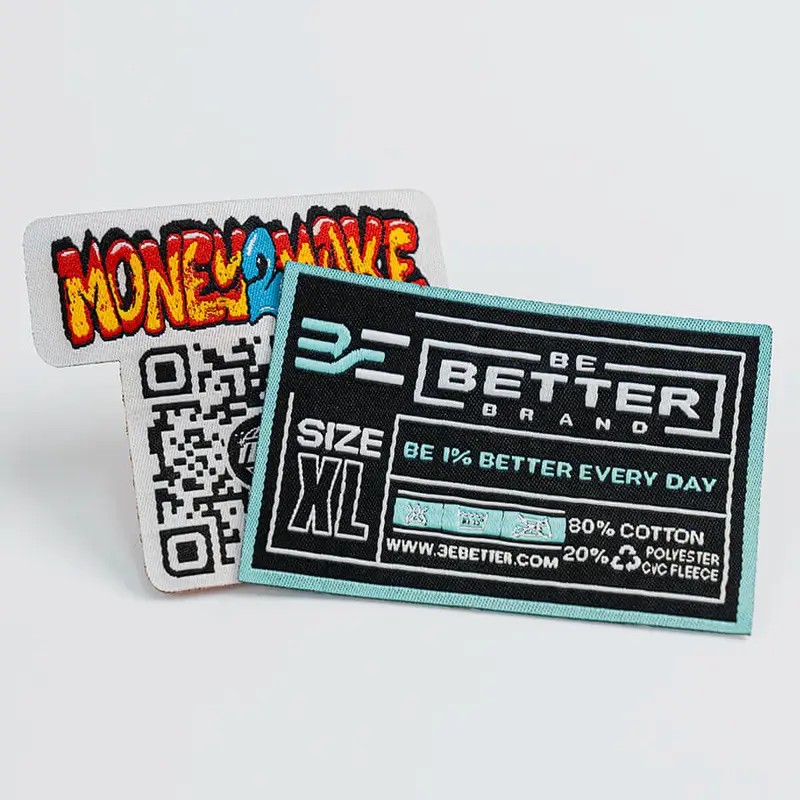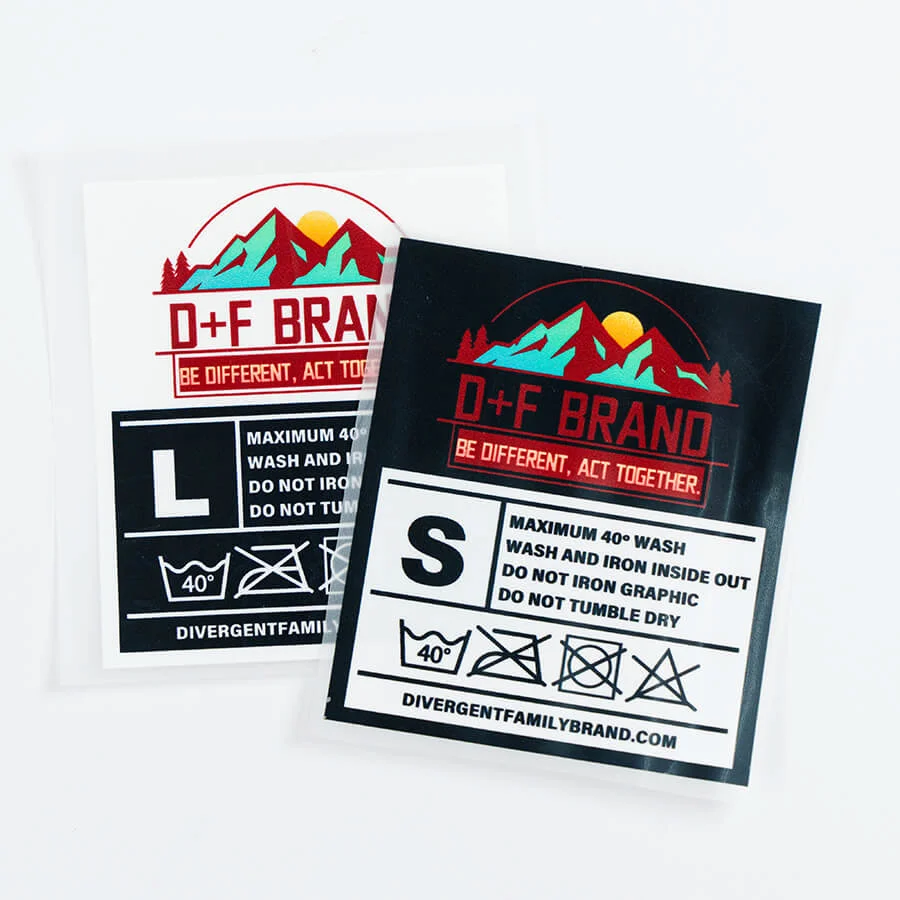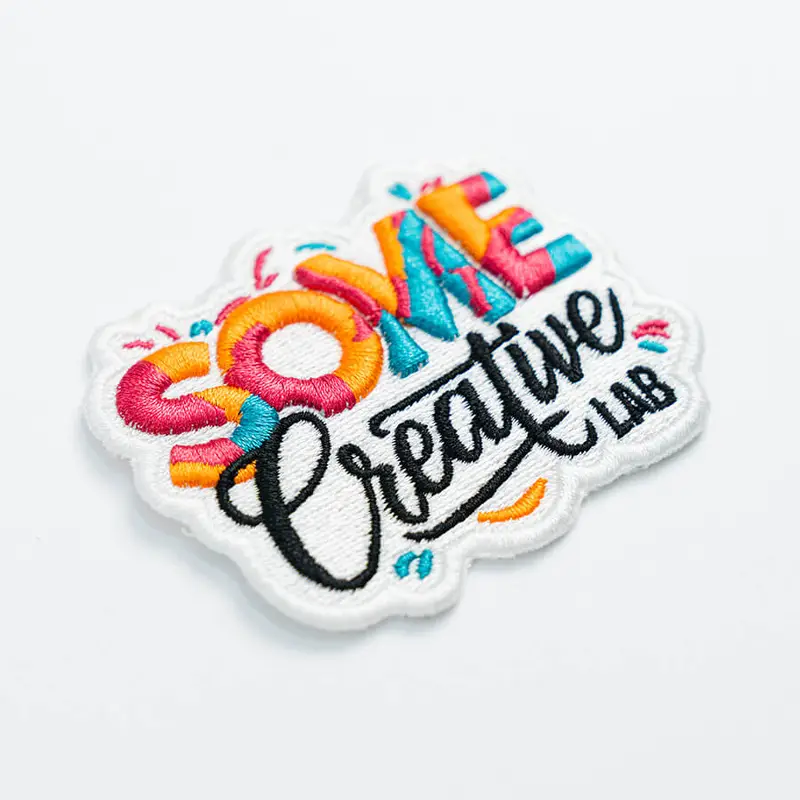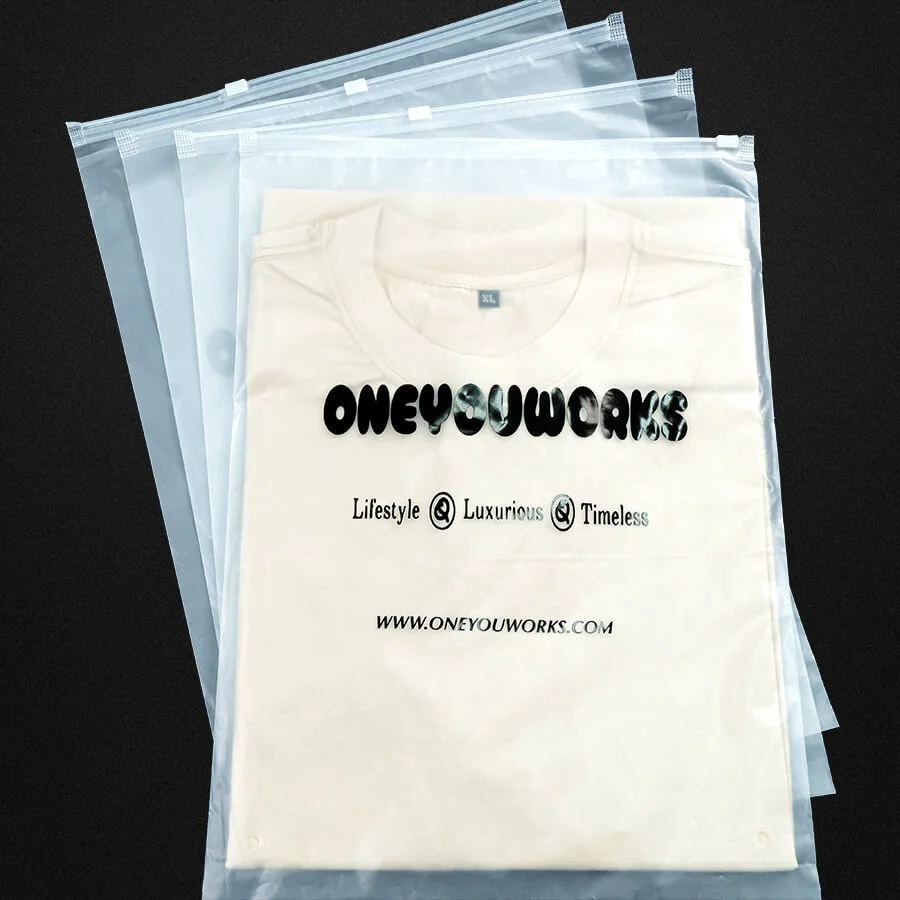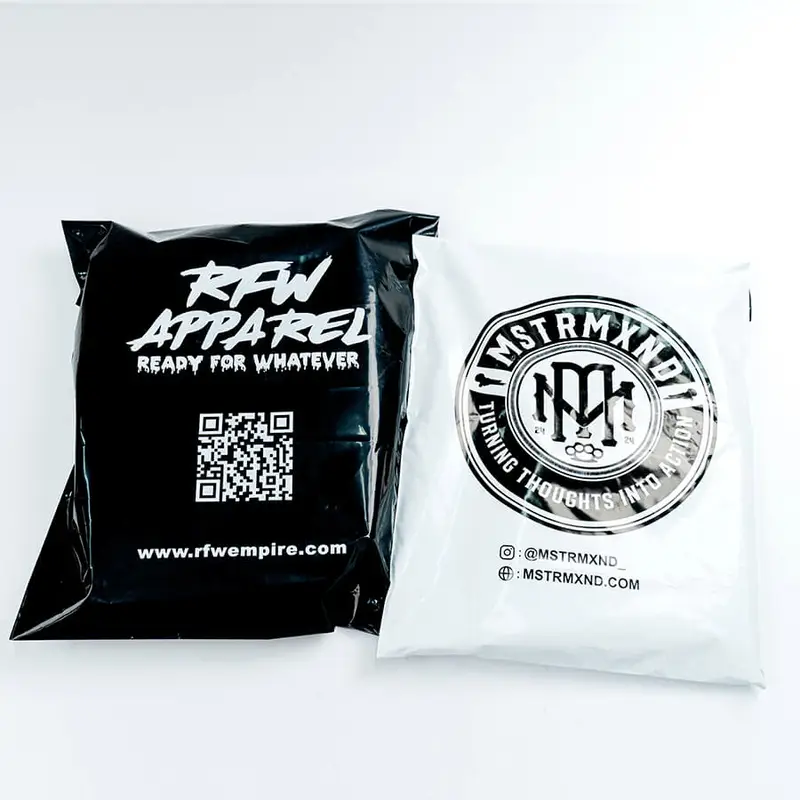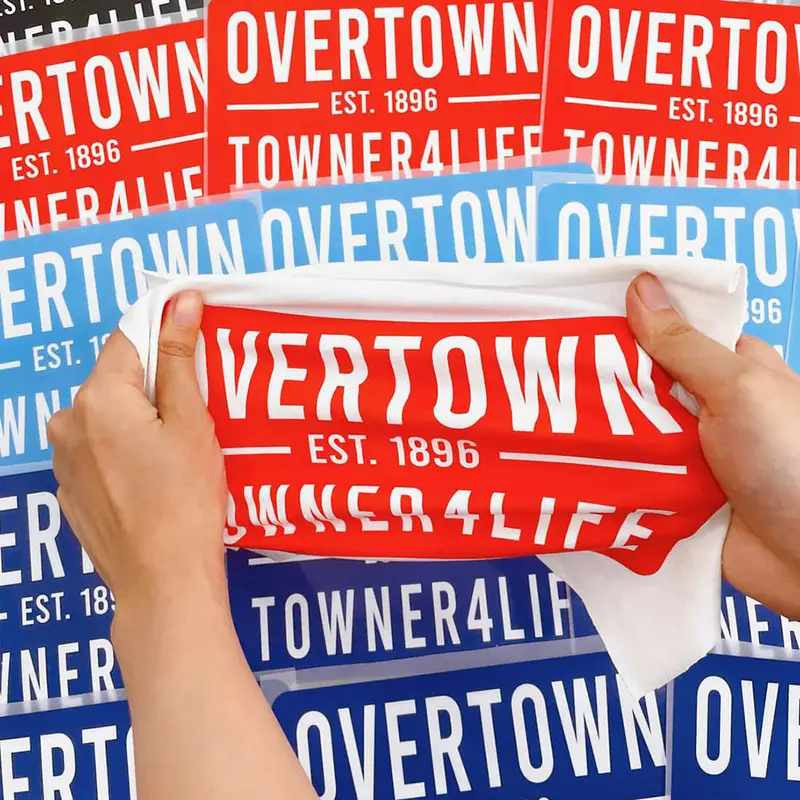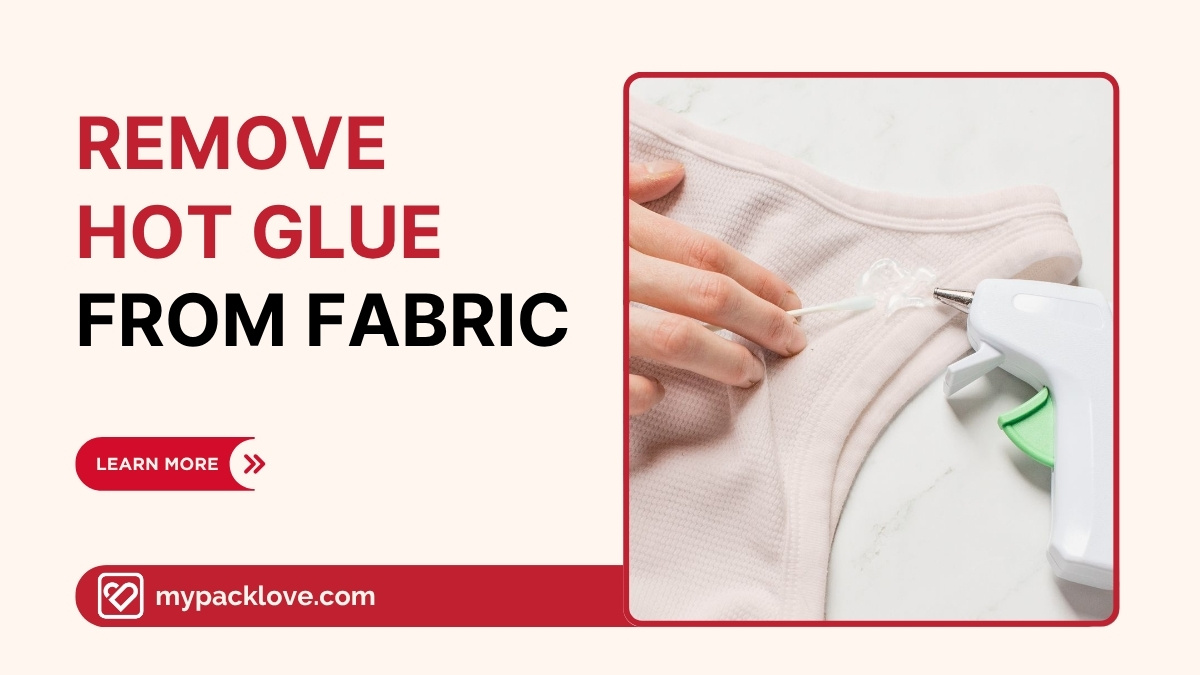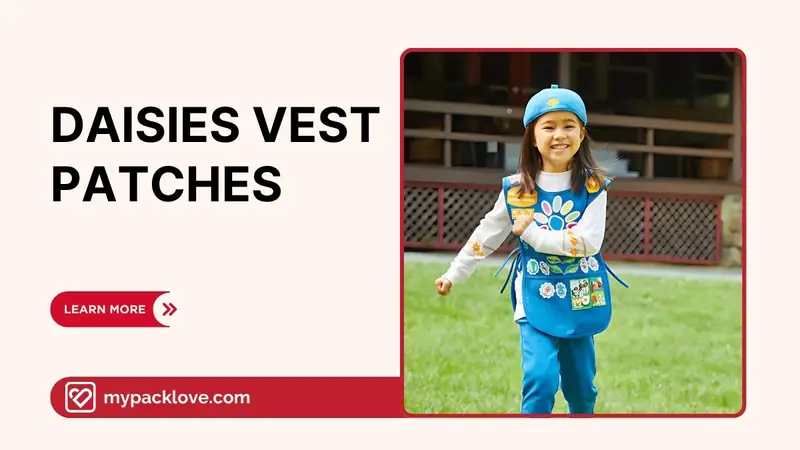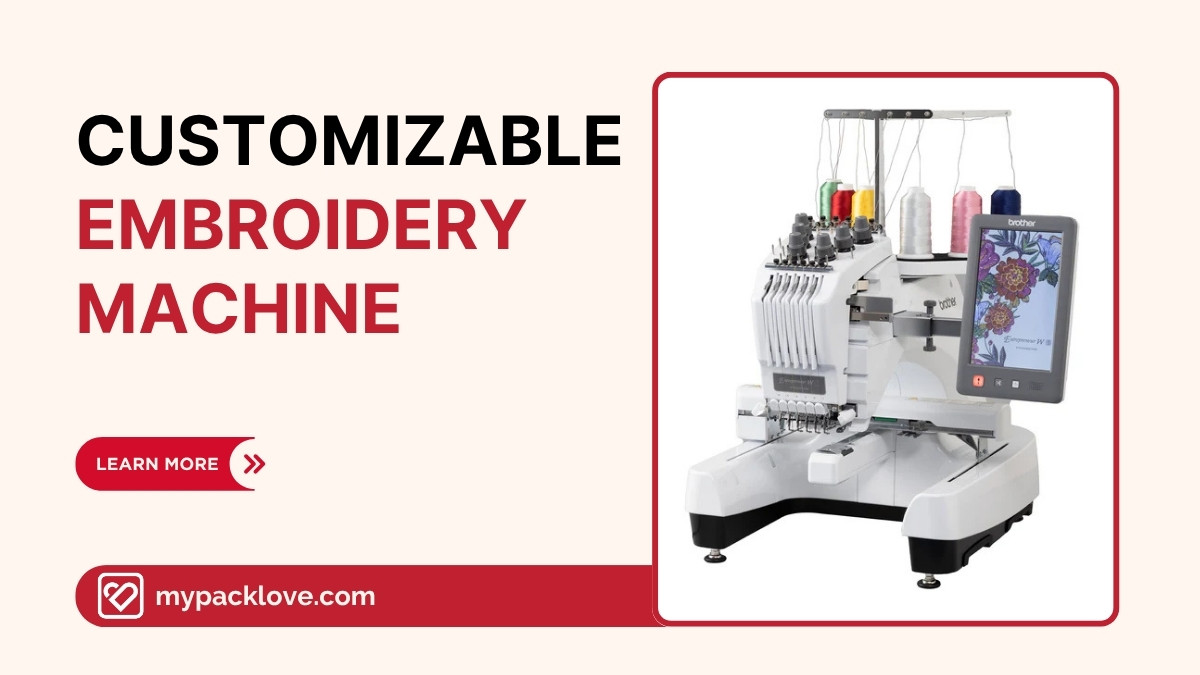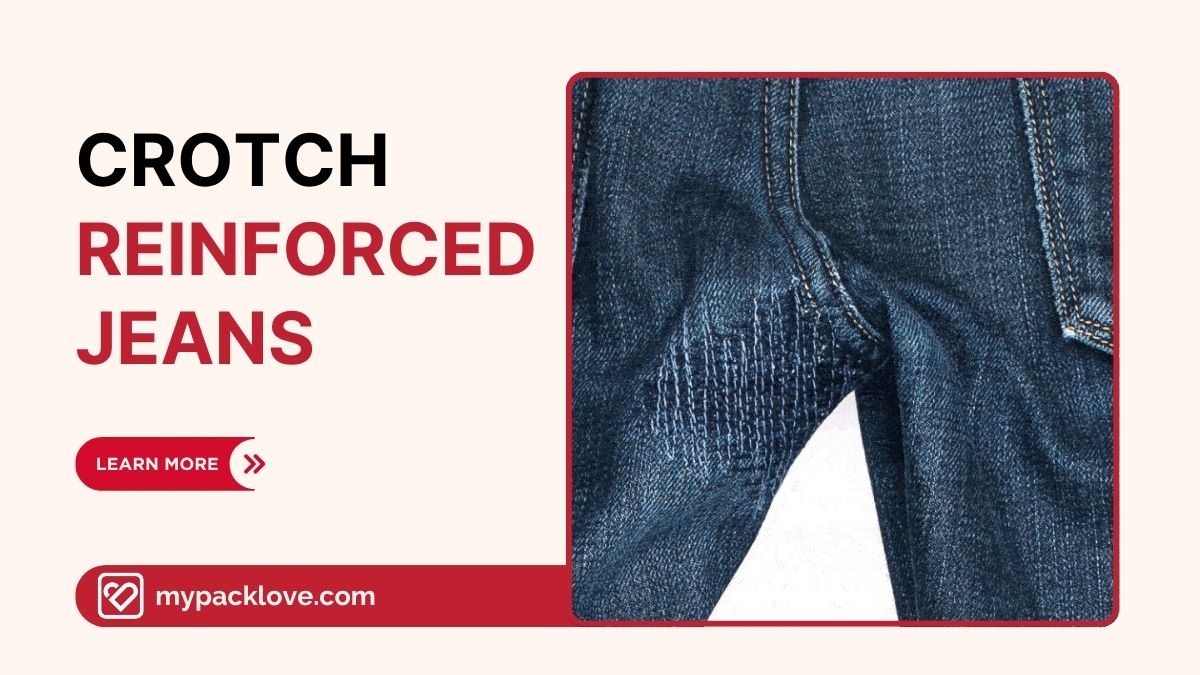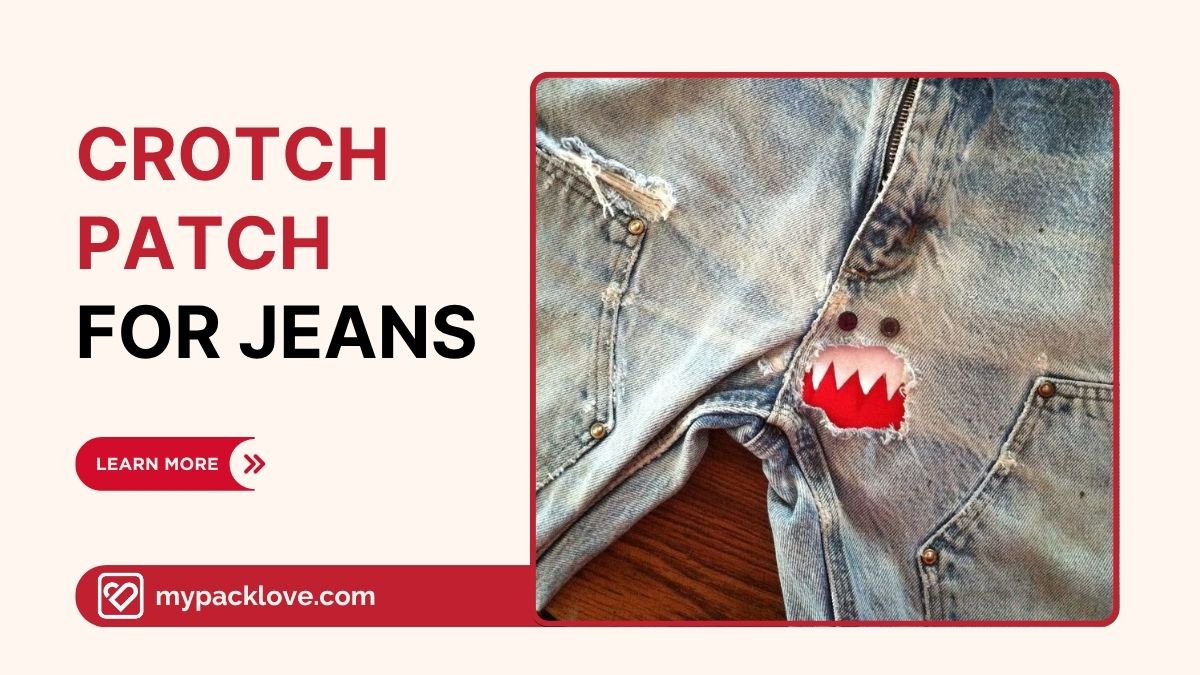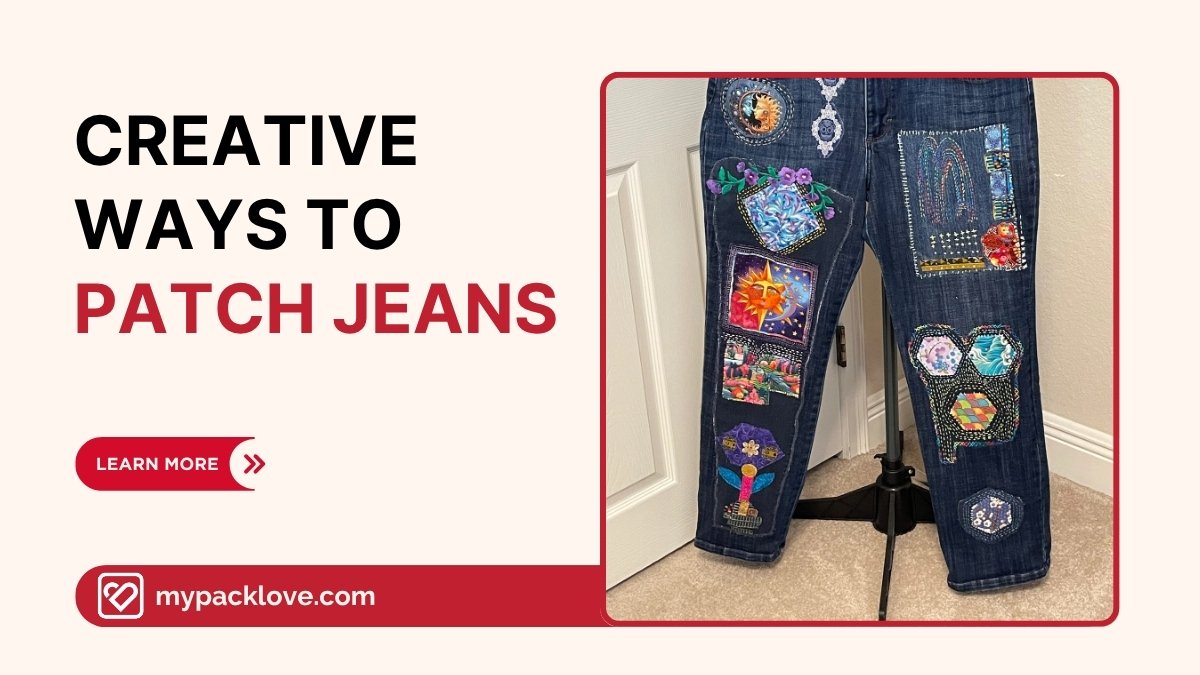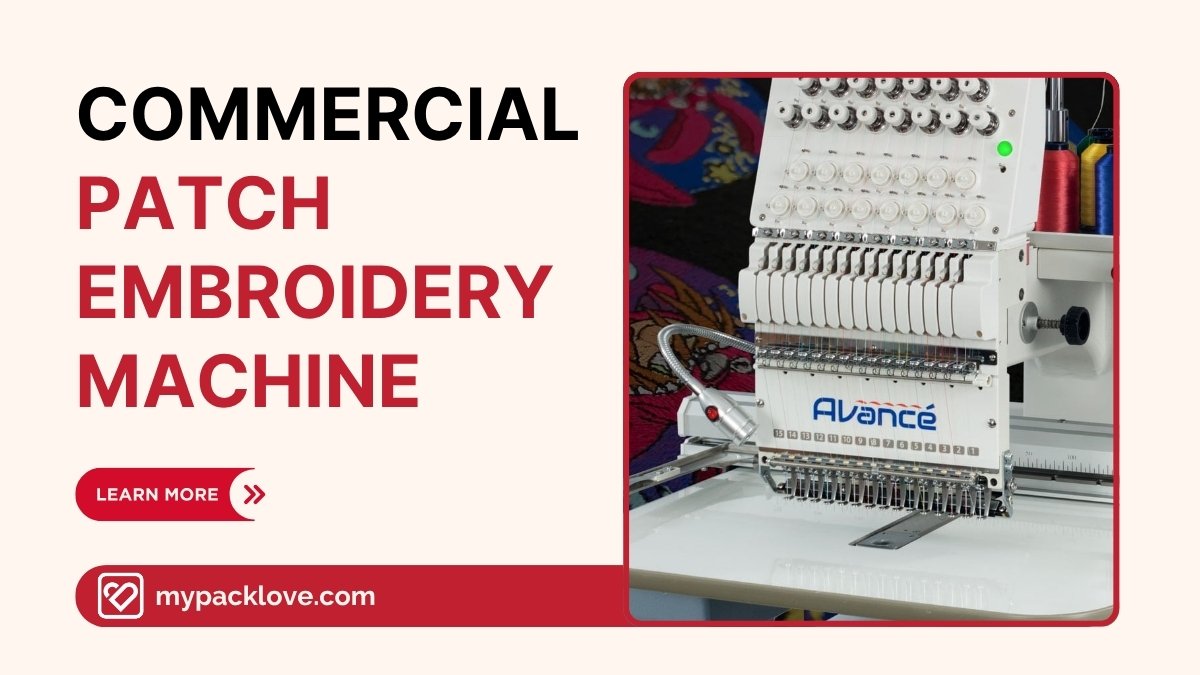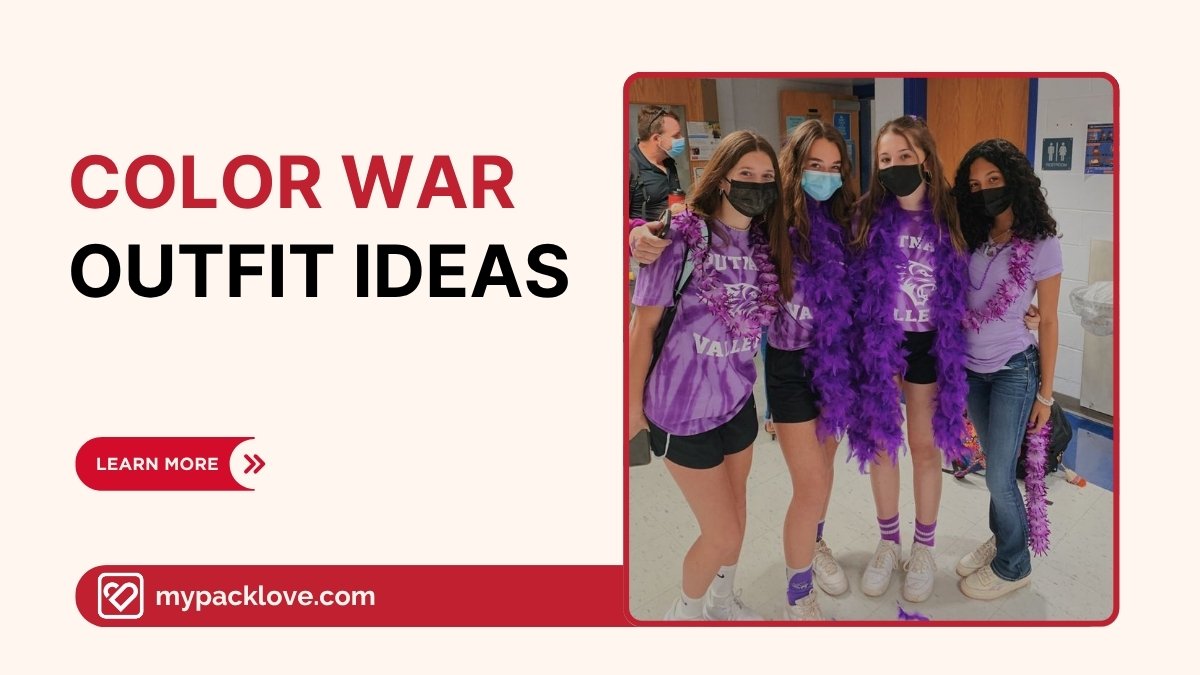What is Taffeta Fabric? Uses, Types and Care Guide
Taffeta has captivated fashion designers and sewing enthusiasts for generations. This introduction provides a glimpse into the world of taffeta, highlighting its historical significance and versatile applications. We’ll delve into the essential characteristics of taffeta, exploring various types from the traditional silk taffeta to more contemporary synthetic variations. Let’s see!
1. What is Taffeta?
1.1 Definition and Origin
Taffeta is a crisp, smooth, plain-woven fabric renowned for its luxurious appearance and exceptional shape retention. Its distinct weave creates a subtly shimmering surface, making it a popular choice for formal wear and high-end garments. The word “taffeta” comes from the Persian word “taftah,” which means “to shine,” or “twisted woven.” This heritage speaks to the rich history and enduring appeal of this elegant fabric.
1.2 Historical Significance
Taffeta has played a significant role in high fashion and royal attire throughout history. Its crisp texture and ability to maintain its shape made it ideal for creating voluminous skirts and structured garments. The fabric’s use in royal attire highlighted its status as a luxurious and prestigious material. This historical significance underscores taffeta’s enduring appeal and its connection to elegance and tradition.
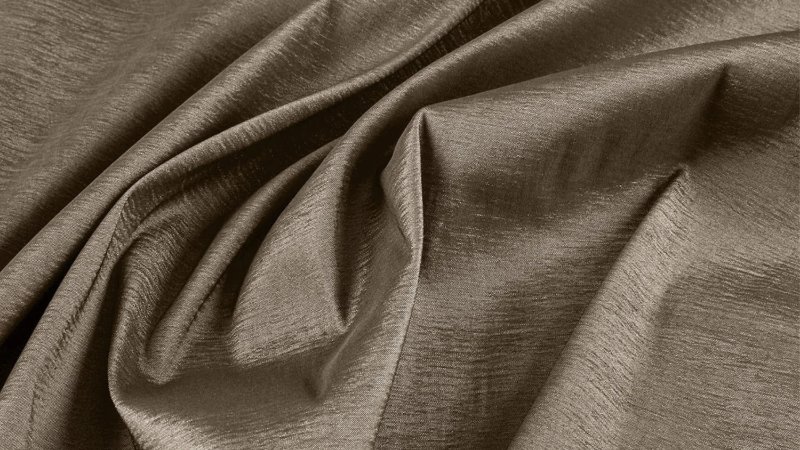
2. How is Taffeta Made?
2.1 The Weaving Process
Taffeta is created through a plain weave technique, where the weft thread passes over and under each warp thread in a consistent, simple pattern. However, what sets taffeta apart is the use of tightly twisted yarns, often with the weft yarns being heavier or having more twists per inch than the warp yarns. This creates a fine rib effect and contributes to the fabric’s characteristic crispness and structure. The tight twisting of these filaments further enhances the fabric’s ability to hold its shape.
2.2 From Silk to Synthetic: Evolution of Taffeta Materials
Traditionally, silk has been the primary material used in taffeta production. The natural luster and luxurious feel of silk taffeta make it highly desirable for formal garments. However, the use of synthetic fibers has significantly broadened taffeta’s availability and affordability.
Polyester, nylon, acetate, rayon and cuprammonium rayons are now common choices. These synthetic options offer similar aesthetics to silk taffeta but often at a lower cost. Comparing silk and synthetic taffeta reveals that while silk offers a distinct natural beauty and drape, synthetic versions frequently boast greater durability and cost-effectiveness.
3. Characteristics of Taffeta
3.1 Texture and Feel
Taffeta’s texture is characterized by its crispness and smoothness. The fine, tightly woven structure contributes to its ability to hold its shape. The softness of the fabric can vary. Piece-dyed taffeta, where the fabric is dyed after weaving, tends to be softer than yarn-dyed taffeta. This difference in softness is noticeable, especially in medium-weight and fine taffeta variations.
3.2 The Lustrous Sheen of Taffeta
Taffeta is known for its lustrous sheen, particularly evident in silk and polyester versions. The tight weave and smooth surface create a captivating, reflective light, giving the fabric a remarkable shimmer. This inherent shine makes taffeta a desirable choice for formal wear.
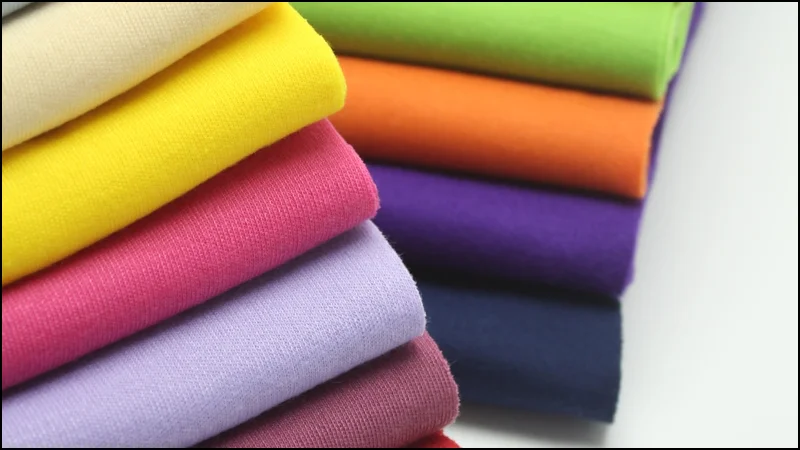
3.3 The Unique Rustle: Taffeta’s Sound
A distinctive rustling sound, known as “scroop,” is a characteristic feature of taffeta, particularly silk taffeta. This unique sound is produced by a special acid finishing process that stiffens the silk fibers, causing them to rub against each other and create the signature rustle.
3.4 Shape Retention and Structure
Taffeta’s exceptional shape retention makes it a preferred choice for structured garments. Its ability to maintain its form is crucial for creating garments like corsets, formal dresses and other items requiring precise tailoring and structure. This characteristic also ensures that the intended design of the garment is maintained over time.
4. Types of Taffeta
4.1 Silk Taffeta: The Luxurious Original
Silk taffeta represents the traditional and luxurious form of the fabric. It’s prized for its natural sheen and crispness, often featuring a higher cost compared to synthetic alternatives. The inherent quality of silk lends a distinct elegance to garments made from this material.
4.2 Synthetic Taffeta: The Affordable Alternative
Synthetic taffeta provides a cost-effective alternative to silk. Commonly crafted from polyester, nylon, rayon or acetate, it offers similar aesthetics but with often greater durability and lower price points. The availability of synthetic options expands the reach of taffeta to a wider range of sewing projects.
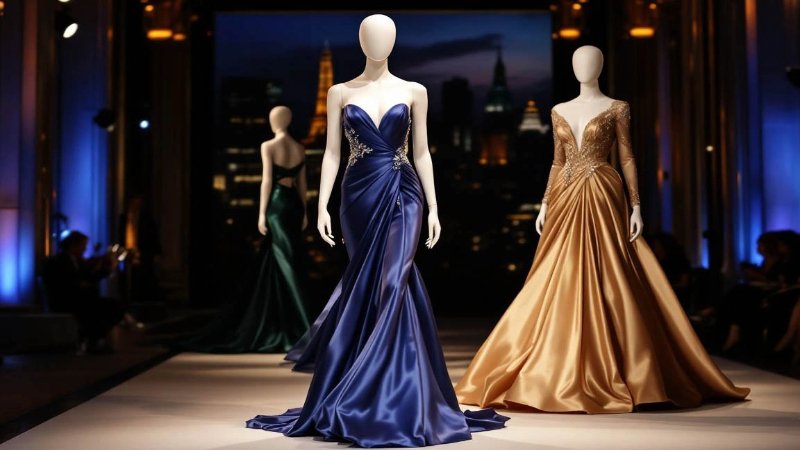
4.3 Yarn-Dyed vs. Piece-Dyed Taffeta
Yarn-dyed taffeta is known for its stiffer texture while piece-dyed taffeta generally offers a softer feel. The different dyeing methods influence the overall feel and handle of the fabric. Piece-dyed taffeta is often preferred for lining applications due to its softness and drape.
4.4 Shot Silk Taffeta: The Iridescent Wonder
Shot silk taffeta boasts a captivating iridescent appearance. Created with contrasting colored warp and weft threads, the fabric displays a mesmerizing interplay of hues, often described as chiné or Pompadour taffeta. The shifting colors add an element of visual interest and luxury to garments.
4.5 Paper Taffeta: The Lightweight Champion
Paper taffeta stands out for its exceptional thinness and lightweight nature. Its paper-like consistency makes it a suitable choice for applications where a very lightweight and delicate material is needed.
4.6 Antique Taffeta: The Textured Classic
Antique taffeta distinguishes itself through its unique texture. The fabric’s unevenly spun yarns create subtle bumps or slubs on the surface. This textured appearance offers a sophisticated and classic touch to clothing or home décor.
4.7 Moire Taffeta: The Watermark Effect
Moire taffeta features a captivating rippling or watermark pattern on its surface. This unique texture results from a finishing process called calendering, where the fabric is passed through heated rollers under pressure. This process flattens some areas of the ribbed weave more than others, creating the distinctive watermark effect.
5. Uses of Taffeta
5.1 Taffeta in Fashion: From Formal Wear to Structured Garments
Taffeta’s exceptional shape retention makes it a popular choice for formal wear. Evening gowns, wedding dresses and prom dresses frequently incorporate taffeta, leveraging its ability to create stunning, structured silhouettes. Its crisp texture and luxurious sheen are ideal for formal occasions. Taffeta is also used in structured garments such as corsets where its ability to hold its shape is crucial for achieving the desired fit and form.
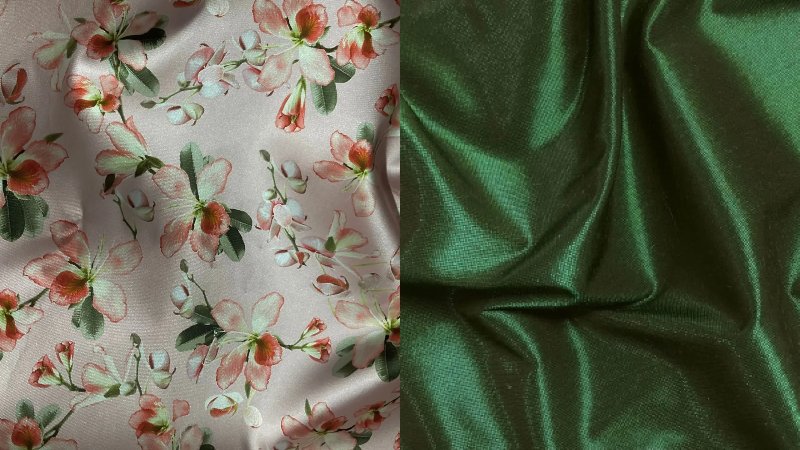
5.2 Taffeta in Home Decor: Adding Elegance to Interiors
Taffeta’s elegance extends beyond apparel. Its smooth texture and lustrous sheen make it a sophisticated choice for home décor. Curtains crafted from taffeta add a touch of refinement and sophistication to any room while taffeta wallpaper can elevate the aesthetic of a space.
5.3 Beyond Apparel: Other Applications of Taffeta
Beyond fashion and home décor, taffeta has found applications in other areas. Historically, nylon taffeta’s lightweight strength and durability played a role in applications such as parachutes during World War II. It’s also been used for items like umbrellas, insulation, handbags and even as a stuffing material for sleeping bags. This versatile fabric has a rich history and demonstrates its adaptability across numerous industries.
6. Caring for Taffeta: Maintaining its Beauty
6.1 Washing and Drying Taffeta
For optimal care, particularly for silk taffeta, dry cleaning is highly recommended. Avoid machine washing or tumble drying as these methods can damage the fabric’s delicate structure and cause shrinkage or distortion. If handwashing is necessary for synthetic taffeta, use a gentle detergent and cool water. Gently agitate the fabric, avoiding harsh scrubbing or twisting.
6.2 Ironing and Steaming Taffeta
Ironing taffeta requires a delicate touch. Use low heat settings and always place a pressing cloth between the iron and the fabric. Steaming is a gentler alternative as it can help to release wrinkles without the risk of heat damage.
6.3 Storage Tips for Taffeta Garments
Store taffeta garments in a cool, dry place away from direct sunlight. To prevent wrinkles and maintain the garment’s shape, use padded hangers, especially for structured garments like corsets or formal dresses. This method protects the fabric from sagging and keeps it looking its best.
7. Alternatives to Taffeta: Exploring Other Fabric Options
7.1 When to Choose Satin Over Taffeta
Satin offers a contrasting aesthetic to taffeta. It typically has a softer drape and a more fluid feel, with a different sheen. Satin’s weight tends to be lighter than taffeta. If a softer more flowing look is desired, satin might be a preferable choice to taffeta’s more structured feel.
7.2 Opting for Organza: A Sheer and Lightweight Alternative
Organza is a sheer, lightweight and crisp fabric. Its transparency allows light to pass through, creating a delicate and airy effect. If a lightweight structure with an element of transparency is needed organza might be a better fit than taffeta.
7.3 Choosing Chiffon: For a Soft and Flowing Look
Chiffon is a soft, flowing fabric with a delicate drape. Its ethereal quality and ability to move gracefully make it suitable for garments where a less structured and more fluid look is desired. It’s often chosen for its soft drape and the way it can move with the body.
8. FAQs about What is Taffeta
8.1 Is taffeta a breathable fabric?
Breathability in taffeta depends on the fiber content. Silk taffeta tends to be more breathable than synthetic varieties. The tight weave characteristic of taffeta generally contributes to its lower breathability compared to fabrics with looser weaves.
8.2 Does taffeta wrinkle easily?
Taffeta is relatively wrinkle-resistant, particularly yarn-dyed taffeta. However, proper care and storage are essential to minimize creasing. Storing taffeta garments on padded hangers and avoiding excessive handling can help prevent wrinkles.
8.3 What is the difference between taffeta and dupioni?
Both taffeta and dupioni are often crisp, especially when made from silk. Dupioni, however, typically features a textured, slubby surface, created by the natural unevenness of the silk fibers whereas taffeta’s surface is smoother. This subtle texture difference distinguishes the two fabrics.
8.4 Can taffeta be used for upholstery?
Heavier more durable taffeta can be used for light-use upholstery applications such as decorative pillows or accent chairs. For heavier use or furniture with high-traffic areas, fabrics with greater durability are recommended.
8.5 How can I tell if taffeta is silk or synthetic?
Silk taffeta typically exhibits a more subtle, natural sheen and a softer hand feel. Synthetic taffeta often appears shinier and can have a slightly stiffer texture. A simple burn test can differentiate the two: synthetic taffeta will melt and char while silk taffeta will burn with a flame.
9. Packlove – Providing service for Custom Packaging and Branding
9.1 Introduce Packlove
Packlove offers a comprehensive range of custom packaging and branding solutions. We provide a wide array of products including Value Booster Kits, Woven Labels, Heat Transfer Labels, Rubber Labels, Zipper Bags and Poly Mailers. These products allow businesses and individuals to create professional and compelling brand identities for their products and enhance customer experience.
9.2 How Packlove Can Help
Packlove’s products go beyond basic packaging. They are powerful tools to elevate brand image and customer experience. Our customizable options allow businesses to integrate their logos, designs and specific colors onto each item, creating cohesive branding across all touchpoints. This personalized approach fosters a stronger brand identity and a more positive connection with customers.
9.3 Contact Packlove
Enhance your packaging and branding today by contacting Packlove. We’re ready to assist you with your needs. Visit our website at https://Packlove.com/.
Read more:
This exploration of taffeta highlights its versatile characteristics, diverse types, extensive uses and essential care instructions. Understanding different fabric types, like taffeta, is crucial for creating effective and long-lasting products. Packlove empowers you to showcase your brand’s unique identity and amplify the impact of your products with custom packaging solutions that complement the elegance and sophistication of taffeta.

